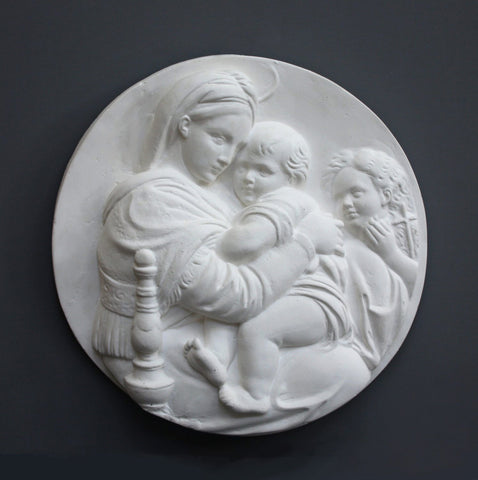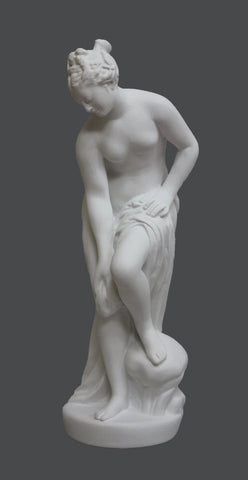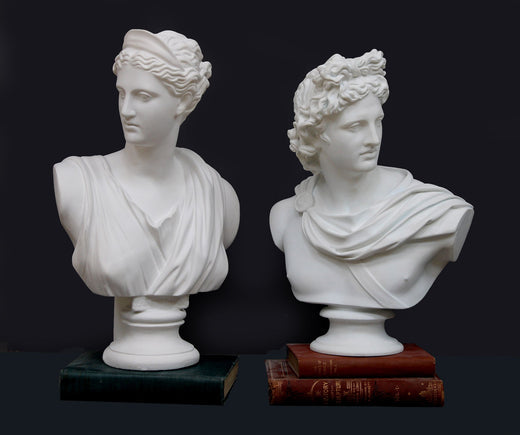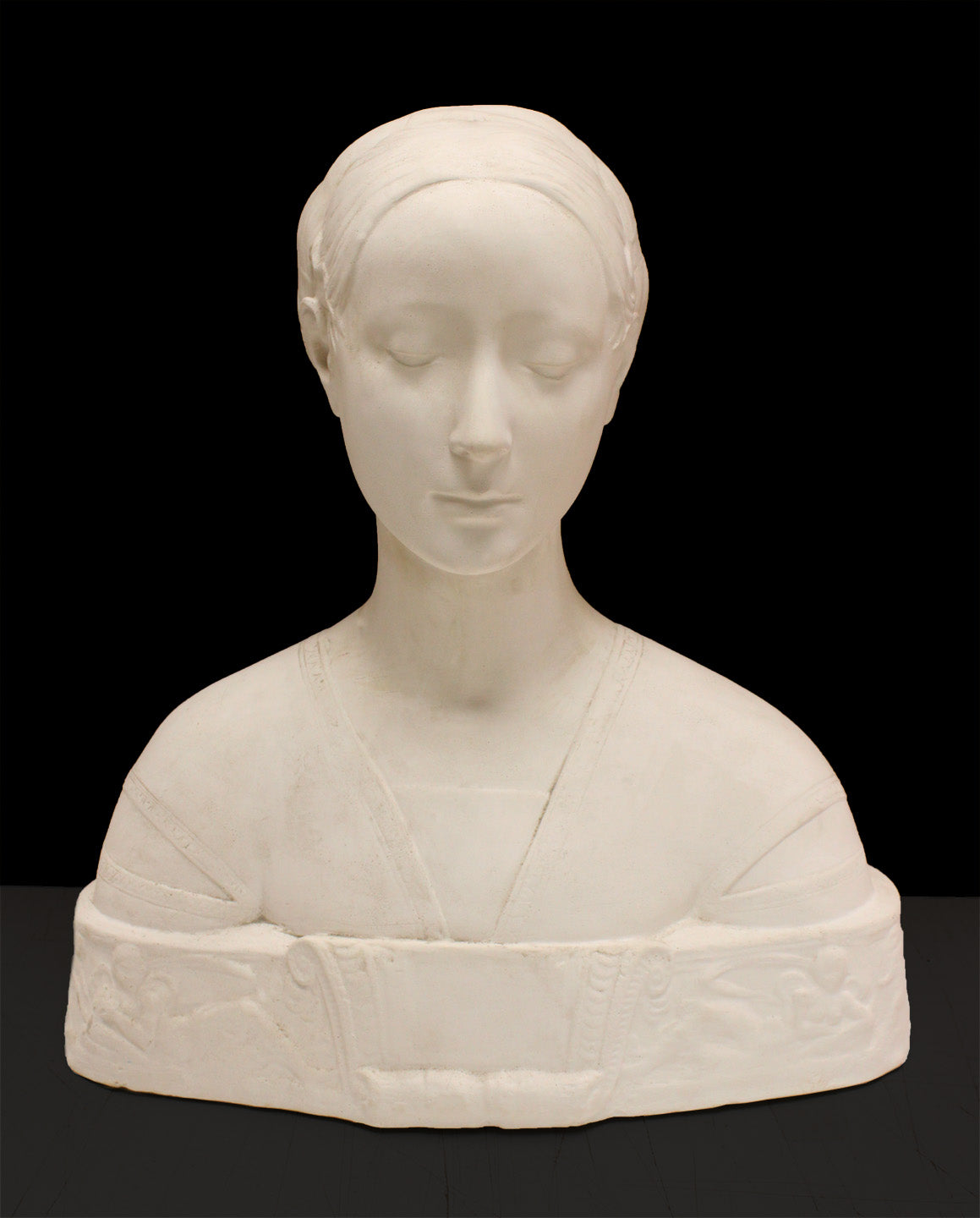"Art is the window to man's soul. Without it, he would never be able to see beyond his immediate world; nor could the world see the man within."
- Lady Bird Johnson
We love this quote because it epitomizes why caring for and reproducing a beautiful collection of art is so fulfilling. For your enjoyment, we wanted to share a couple of new pieces in our collection that are windows to love.
The first piece is one that illustrates the universal love of mother and child. The relief, contained within an eleven and a quarter inch circumference, shows a mother embracing her baby, her head resting against his, and her right arm at his back. His feet are kicking, and you can imagine how he might be rubbing his toe against his heel as he kicks them back and forth.
The piece is, not surprisingly, showing Mother Mary and Baby Jesus, and is titled Madonna della Seggiola:
The relief is after the Renaissance painting of the Madonna and Child created by Raphael around 1514. He painted it during his Roman period. The artwork is also known as Madonna della Sedia, "seggiola" and "sedia" being Italian for chair. Its title comes from the fact that the Madonna is sitting on a chair, visible only from the post in the foreground. A young St. John admires them in the background. The heavenly figures fill the tondo (a circular artwork), and this close proximity gives viewers the sense that they are sharing the same space with them. It's also possible that the magnification towards the center of the work was meant to resemble that of a convex mirror, which was associated with the Immaculate Conception.
Raphael's piece has been copied over the centuries into such art as paintings and engravings, and this version is by an unknown artist. Queen Victoria of England gave her husband Prince Albert, a fan of Raphael, one such copy - a watercolor by Robert Thorburn. Raphael's original was acquired by the Medici family, but has been in the Pitti Palace in Florence since the 18th century. For a time in the early 1800s, the artwork was housed in Paris after being seized by Napoleon's troops.
***
The other piece we're featuring shows a woman that, though frozen in cast plaster, has the appearance of standing at the edge of a pool, her head tilted in a manner similar to the Mother Mary above. But instead of resting it against an infant, she smiles to herself. She is doing the everyday task of bathing and is completely at peace.
This figure is, of course, the Roman Goddess and is titled, The Venus at the Bath (Reduction) by Christophe-Gabriel Allegrain:
Allegrain (1710-1795) received the commission for this piece in 1756 from the Director of the King's Buildings, and completed the marble in 1767. Also known as the Bather, the original is 68.5 inches high. The style was influenced by the work of Giambologna (1529-1608) and the concept also loosely derived from his Bather Placing Her Foot on a Perfume Vase. Denis Diderot, the French philosopher and art critic, praised Allegrain's statue when it was shown at the 1767 Salon. King Louis XV offered the sculpture to his mistress, Madame Du Barry, who placed it outdoors at her home, the Chateau de Louveciennes. We also have a larger reduction of this piece.
We hope you enjoyed the more in-depth look into these new pieces. If you want to see more, you can head over to our Recent Additions collection page. There are always interesting "windows" to help you see beyond your immediate world.
Warm regards,
Robert, Kathleen, Kayla, and Lisa
Please note: Sources used can be found on the corresponding product pages.
If you want to receive interesting articles such as this one in your inbox, sign up for our newsletter here!



